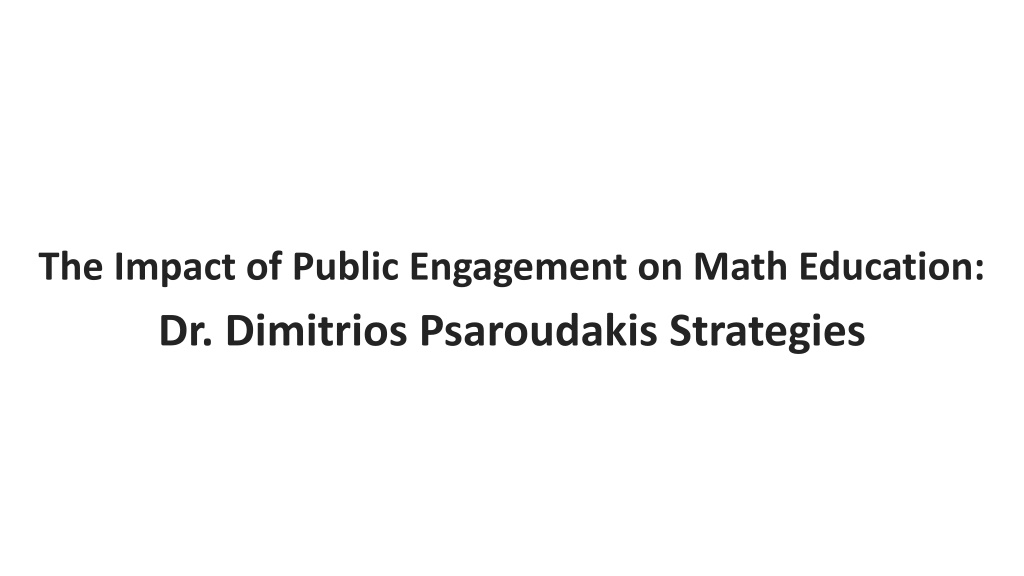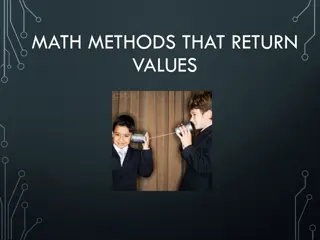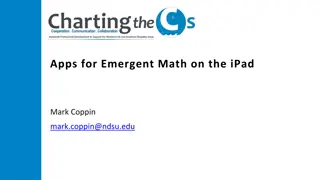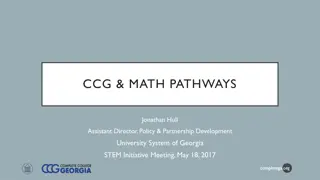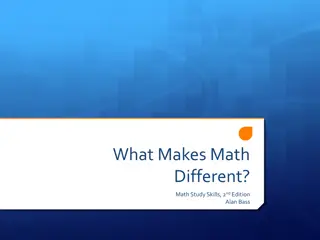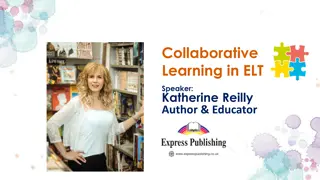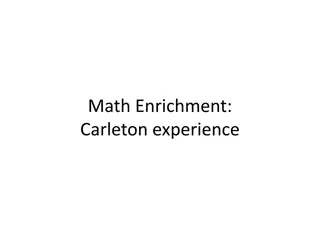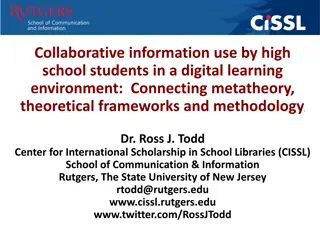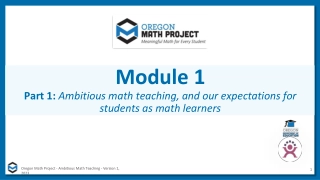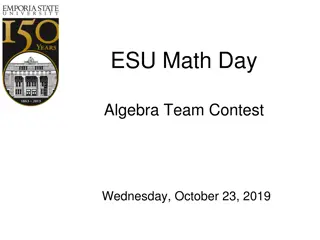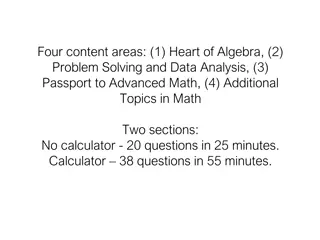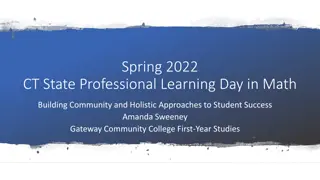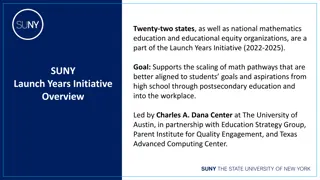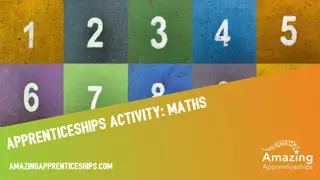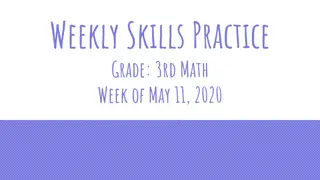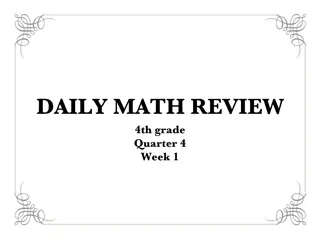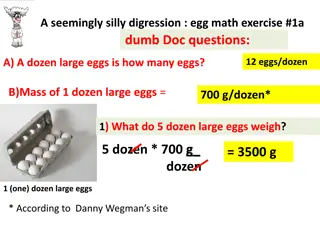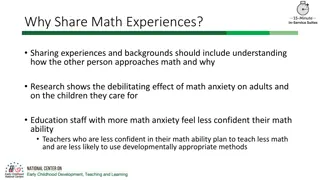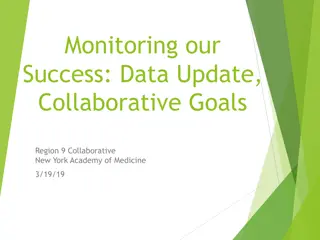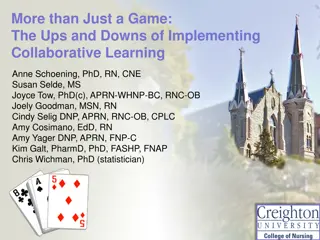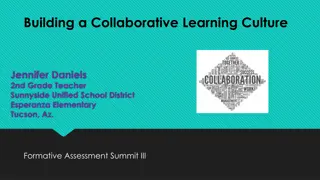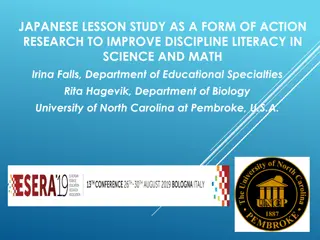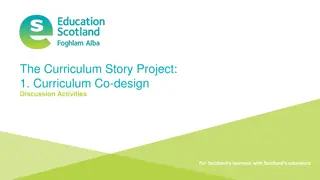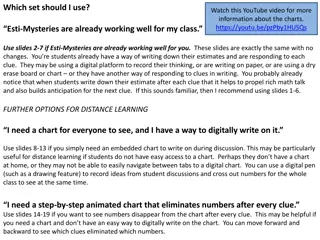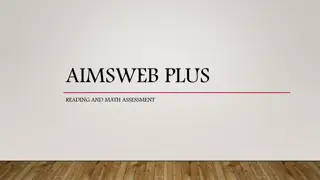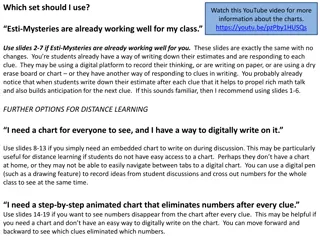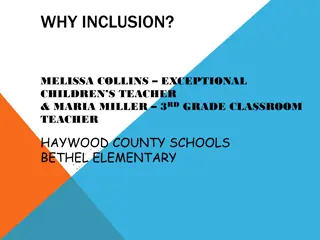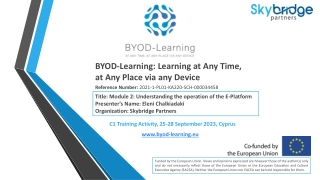Collaborative Learning in Math: Dr. Dimitrios Psaroudakis Innovative Approaches
Discover the collaborative learning techniques employed by Dr. Dimitrios Psaroudakis that promote teamwork, critical thinking, and a deeper understanding of mathematical concepts.
Download Presentation

Please find below an Image/Link to download the presentation.
The content on the website is provided AS IS for your information and personal use only. It may not be sold, licensed, or shared on other websites without obtaining consent from the author. Download presentation by click this link. If you encounter any issues during the download, it is possible that the publisher has removed the file from their server.
E N D
Presentation Transcript
The Impact of Public Engagement on Math Education: Dr. Dimitrios Psaroudakis Strategies
Mathematics is a subject that often elicits a range of emotions from students and the general public alike fear, anxiety, and sometimes even outright dislike. Yet, it is also a subject that underpins many aspects of our daily lives and is crucial for the advancement of technology and science. Addressing the challenge of improving mathematical literacy and fostering a positive attitude towards math is a complex task. Dr. Dimitrios Psaroudakis, an Associate Professor at the Department of Mathematics at Aristotle University of Thessaloniki, Greece, is at the forefront of this endeavor. Through his innovative public engagement strategies, Dr. Psaroudakis is making significant strides in transforming math education and making it more accessible and enjoyable for everyone.
Understanding the Need for Public Engagement in Math Education Public engagement in education involves reaching out to the community beyond the traditional classroom setting. For math education, this means addressing the widespread misconceptions and negative attitudes that many people have towards the subject. Public engagement strategies can help demystify math, making it more relatable and demonstrating its relevance in everyday life. Dr. Psaroudakis recognizes that improving mathematical literacy is not just about teaching students how to solve equations or memorize formulas. It s about creating a cultural shift where mathematics is seen as an exciting, useful, and integral part of life. His approach involves several key strategies: interactive teaching methods, community outreach, leveraging technology, and collaboration with educational institutions and policymakers.
Interactive Teaching Methods One of the core strategies Dr. Psaroudakis employs is interactive teaching. Traditional lecture-based methods often fail to engage students or make the subject matter come alive. Instead, Dr. Psaroudakis uses a variety of interactive tools and techniques that cater to different learning styles and make learning math a more active and engaging process. Problem-Based Learning (PBL): In his classrooms and workshops, Dr. Psaroudakis emphasizes problem-based learning. This method involves presenting students with real-world problems that require mathematical solutions. By working through these problems, students can see the practical applications of mathematical concepts, which enhances their understanding and retention of the material.
Collaborative Learning: Group projects and collaborative activities are another staple of Dr. Psaroudakis approach. These activities not only help students learn from each other but also develop important skills such as teamwork, communication, and critical thinking. Collaborative learning also helps to break down the isolation that can sometimes accompany studying math, making it a more social and interactive experience. Use of Technology: Dr. Psaroudakis integrates technology into his teaching to create dynamic and interactive learning experiences. This includes the use of educational software, online platforms, and interactive simulations that help students visualize complex mathematical concepts and engage with the material in a hands-on way.
Community Outreach Dr. Psaroudakis commitment to public engagement extends beyond the university campus. He regularly participates in community outreach programs designed to bring mathematics to a wider audience. These programs are aimed at demystifying math and making it more approachable for people of all ages. Public Lectures and Workshops: Dr. Psaroudakis frequently delivers public lectures and conducts workshops at community centers, libraries, and other public venues. These events cover a broad range of topics, from the mathematical patterns found in nature to the role of math in technology and innovation. By presenting math in an engaging and accessible manner, he helps to change the public perception of the subject.
Math Clubs and Camps: For younger audiences, Dr. Psaroudakis organizes math clubs and summer camps. These programs provide students with opportunities to explore math outside the traditional classroom setting. Activities such as math competitions, coding challenges, and exploratory projects are designed to spark curiosity and creativity, helping students to develop a love for the subject. Hands-On Activities: Dr. Psaroudakis emphasizes the importance of hands-on learning in his outreach programs. Whether through puzzles, games, or interactive experiments, these activities make learning math a fun and memorable experience. By engaging participants in active learning, he helps to foster a deeper understanding and appreciation of mathematical concepts.
Leveraging Technology In today s digital age, technology plays a crucial role in education. Dr. Psaroudakis leverages a variety of technological tools to enhance his public engagement efforts and reach a broader audience. Online Learning Platforms: Dr. Psaroudakis has developed online platforms that provide a wealth of resources for students and educators. These platforms include instructional videos, interactive exercises, and educational games that make learning math more engaging and accessible. By offering flexible learning options, he helps to remove barriers to education and provide support for learners at all levels.
Virtual Classrooms and Webinars: To reach a global audience, Dr. Psaroudakis conducts virtual classrooms and webinars. These online sessions allow participants from different geographical locations to engage with mathematical content and interact with experts in the field. Virtual classrooms also provide opportunities for collaborative learning and peer interaction, making the learning experience more dynamic and inclusive. Social Media Engagement: Recognizing the influence of social media, Dr. Psaroudakis uses platforms like Twitter, Facebook, and Instagram to share mathematical insights, promote events, and engage with the community. His social media presence helps to foster a positive attitude towards mathematics and encourages public participation in educational activities.
Collaboration with Educational Institutions and Policymakers Collaboration is a key aspect of Dr. Psaroudakis public engagement strategy. By partnering with educational institutions, non-profit organizations, and policymakers, he is able to broaden the impact of his initiatives and create a more supportive environment for math education. Partnerships with Schools and Universities: Dr. Psaroudakis collaborates with schools and universities to integrate his outreach programs into existing educational frameworks. These partnerships help to create a seamless transition between formal education and extracurricular learning opportunities, providing students with comprehensive support for their mathematical development.
Measuring Impact and Looking Forward Dr. Psaroudakis believes in the importance of measuring the impact of his public engagement efforts. By collecting data and feedback from participants, he continually refines his programs to better meet the needs of the community. Success stories from students, teachers, and community members serve as a testament to the effectiveness of his initiatives. Looking forward, Dr. Psaroudakis aims to expand his outreach programs and explore new ways to engage the public. He envisions a future where mathematical literacy is widespread, and individuals of all ages can appreciate and harness the power of mathematics.
Virtual Classrooms and Webinars: To reach a global audience, Dr. Psaroudakis conducts virtual classrooms and webinars. These online sessions allow participants from different geographical locations to engage with mathematical content and interact with experts in the field. Virtual classrooms also provide opportunities for collaborative learning and peer interaction, making the learning experience more dynamic and inclusive. Social Media Engagement: Recognizing the influence of social media, Dr. Psaroudakis uses platforms like Twitter, Facebook, and Instagram to share mathematical insights, promote events, and engage with the community. His social media presence helps to foster a positive attitude towards mathematics and encourages public participation in educational activities.
Dr. Dimitrios Psaroudakis dedication to public engagement in math education is both inspiring and impactful. Through his innovative strategies, he is transforming the way mathematics is taught and perceived, making it more accessible, engaging, and relevant to people s lives. By fostering a positive attitude towards math and promoting mathematical literacy, Dr. Psaroudakis is helping to build a society that values and understands the importance of this critical discipline.
